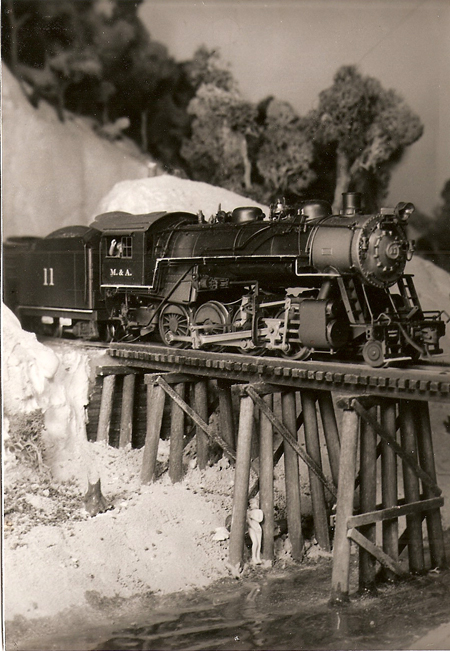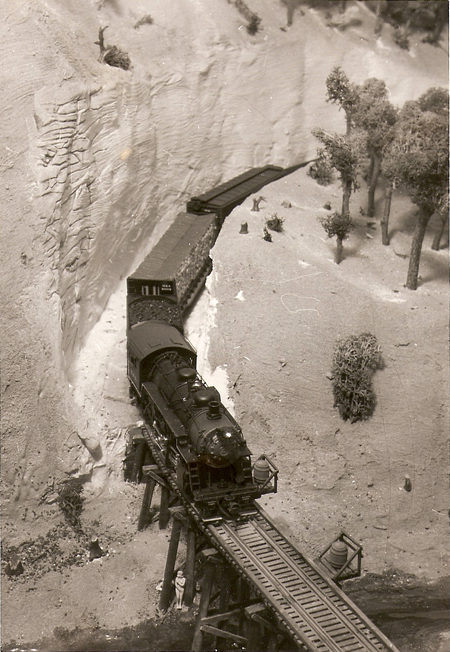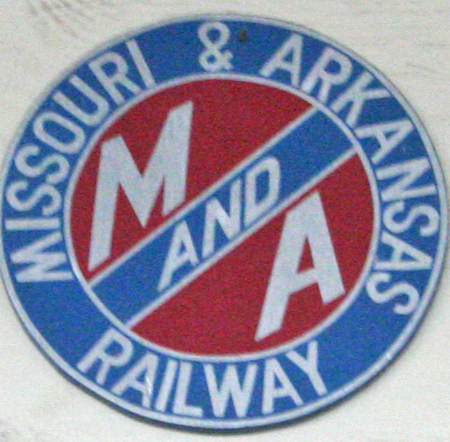 |
Missouri and Arkansas RailroadModel |
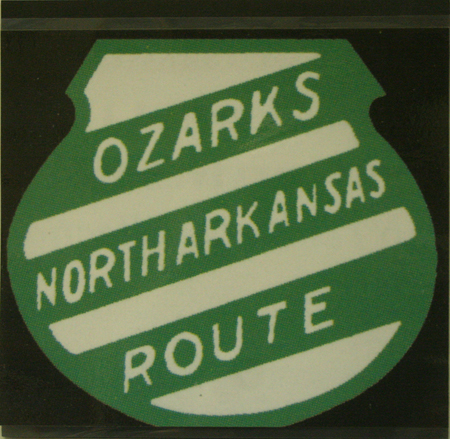 |
While I was still in graduate school, I bought a copy of James Fair's "North Arkansas Line". I read the book and became interested to learn more. By the time I got around to checking it out for real, the successor Arkansas and Ozarks had been abandoned and was being scrapped. On a fishing trip to Roaring River State Park in Missouri, we made a side trip to Eureka Springs, AR. At a highway crossing where the branch to Eureka Springs left the mainline, we discovered a pile of scrape, including part of a switch stand with A&O switch lock attached. We picked that up, and it remains in my collection to this day. We even picked up a short stretch of rail. |
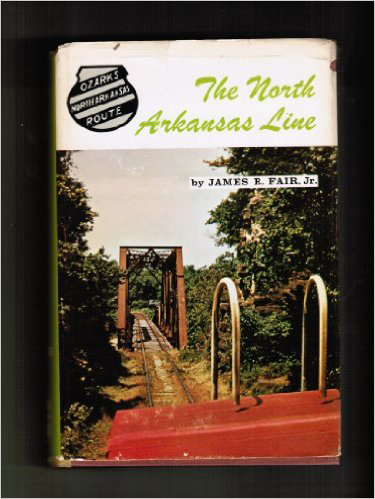 |
| My parents built a new home in 1965, and I convenced them to enlarge an upstair closet to 5'x15' for a train room. Originally it was to house my Lionel layout. However, grad school had led me to changing to HO scale. After I started work at The College of the Ozarks, I started to plan a HO layout which free-lanced the Missouri & Arkansas in Harrison, AR. What follows is my attempt to model that railroad in that city. |
| During Spring Break of 1972, I began construction of a HO scale layout following the plan shown below. I built the bench work in my parents garage and carried it to the second floor "closet". |
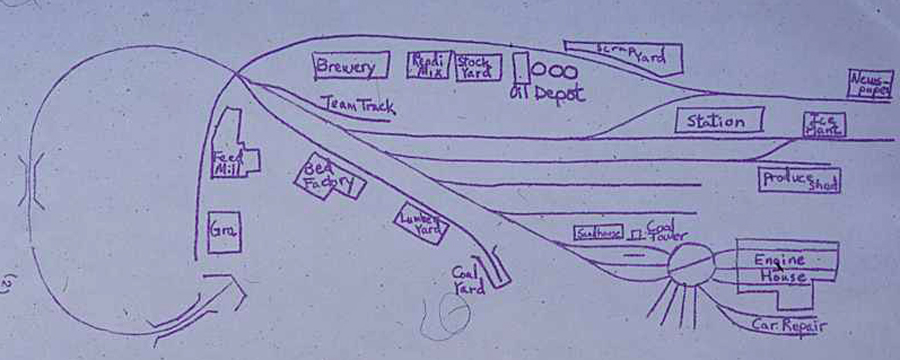 |
| This picture of the Harrison engine terminal area was used on the company calender in the mid-70s. The 40-class engines were aquired second hand from the Big Four, the same as the 2500-class engines on the Orient part of the Santa Fe. The model is a Hallmark brass locomotive patterned after the Orient (Santa Fe) locos.. All three model locomotives have PFM sound. |
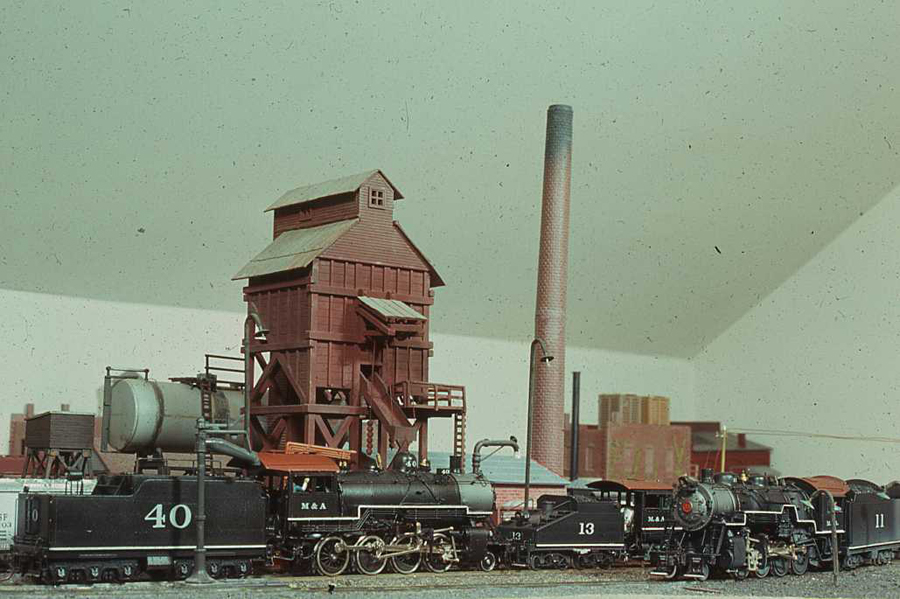 |
| While the company photographer had color film in his camera, one of the new 40' box cars for clean loading was dug out of the yard. Note the silver Frisco covered hopper in the background. It is used to haul locomotive sand from Arkola Sand and Gravel's sand plant in Van Buren. |
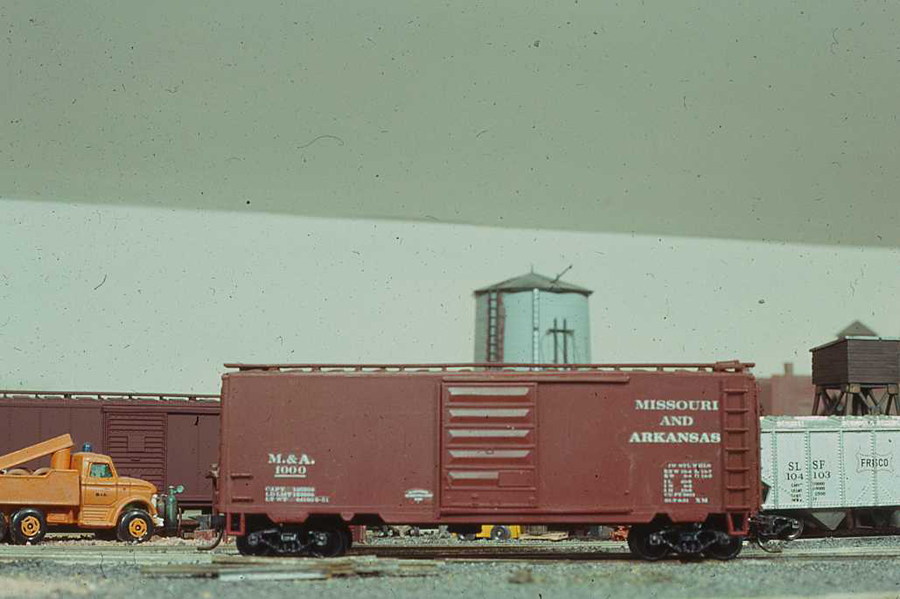 |
| Consol #40 is seen taking on water at the column of the ready track as it prepares for a trip to Seligman, MO and the Frisco connection before continuing on to Joplin, MO and its KCS connection. The coaling tower is a super detailed Plasticville model. |
 |
| Engine #40 is seen coupled up to its train on the passing track at Harrison. |
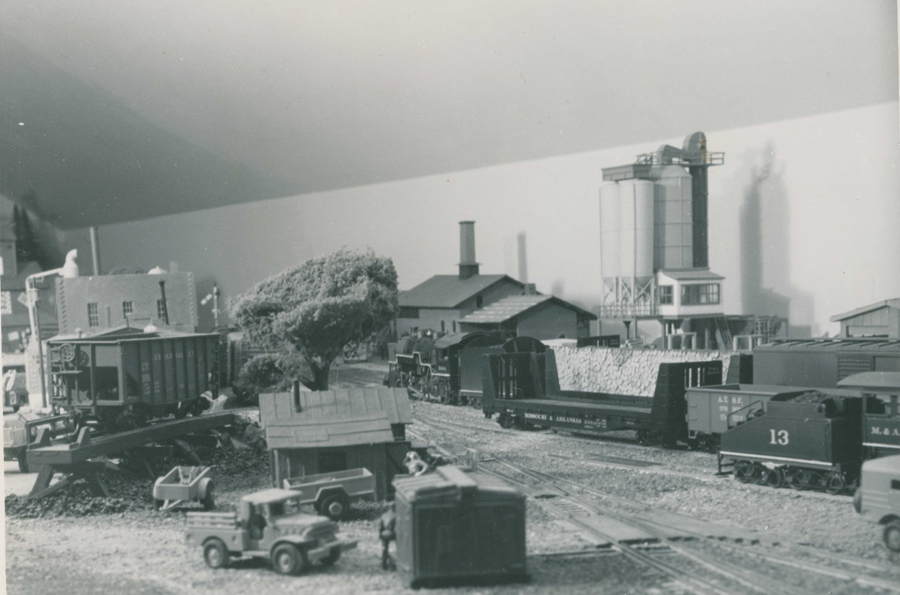 |
| Here we see M&A #11 passing a hobo camp in the woods west of Harrison. |
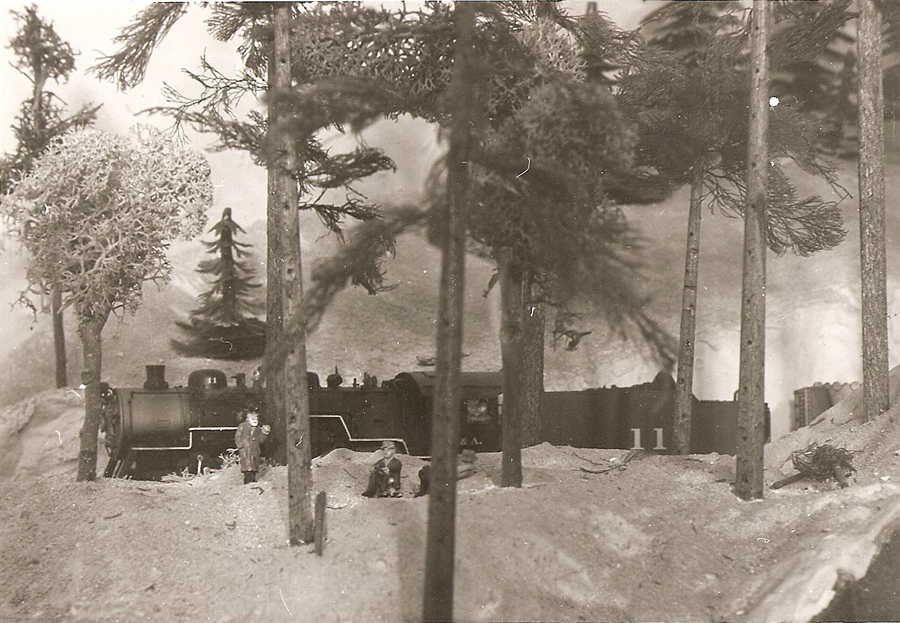 |
| On another day M&A 2-8-0 #11 leads a freight down the hill and across a small trestle. Two photographers caught the scene from two different angles. Note the young lady under the bridge who has been skinny dipping. | ||
|
| The left photo above was the inspiration for artist John Bell to paint a water color which was presented to Jan and me as a wedding present. John is best know around Ft. Smith for his historic scenes of the city, many with trains or street cars. Some of those paintings have been reporduced as note cards. | 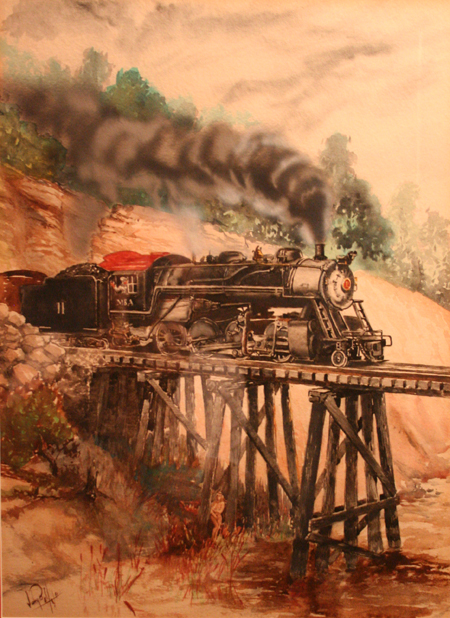 |
| Because the mainline was very short to the right of the station, I bought a 0-6-0 switcher that had an Omaha prototype. With a small 0-6-0 the switcher could get 2 40' cars past the switch to the passing track. Such moves were necessary to get cars on the rear of the switcher to switch most of the customers on the back track. The switcher #13 is seen here switching the yard. |
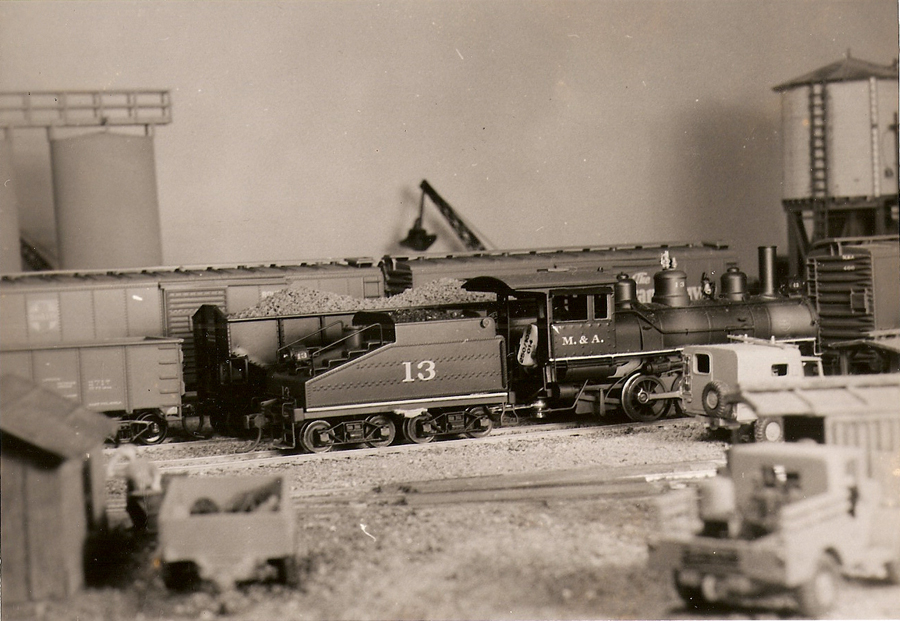 |
| After the WWII, the M&A found that ex-military vehicles made excellent MofW vehicle as seen here in the foreground. |
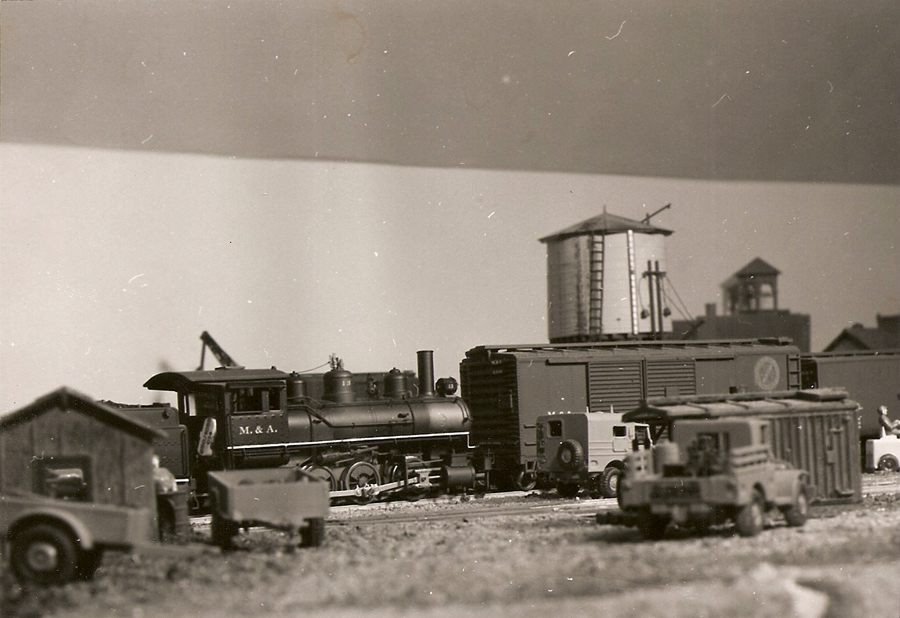 |
| This is the model maintenance of way facility in the modeled area of Harrison, AR. Note the slopping ceiling of the second floor closet in my parents home in Ft. Smith, the original site for this layout started during Spring Break of 1972. |
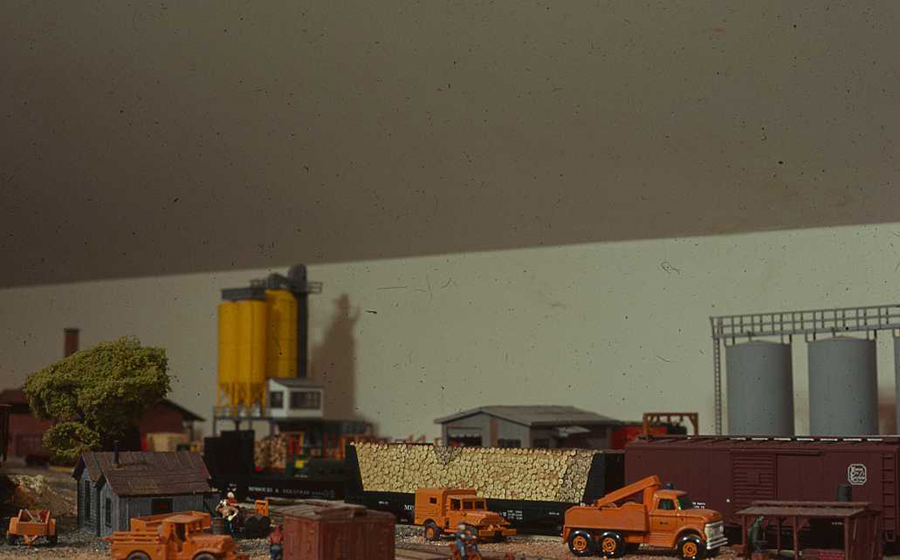 |
| The second home of this layout was in Clarksville, AR in the garage built with an attached house. The garage had all the comforts of home, heat and air, cable TV, telephone, and intercom. Note the Overhead garage door visible behind the engine house. That engine house took Best of Show at the 1977 Mid-Continent NMRA convention in Little Rock, AR. |
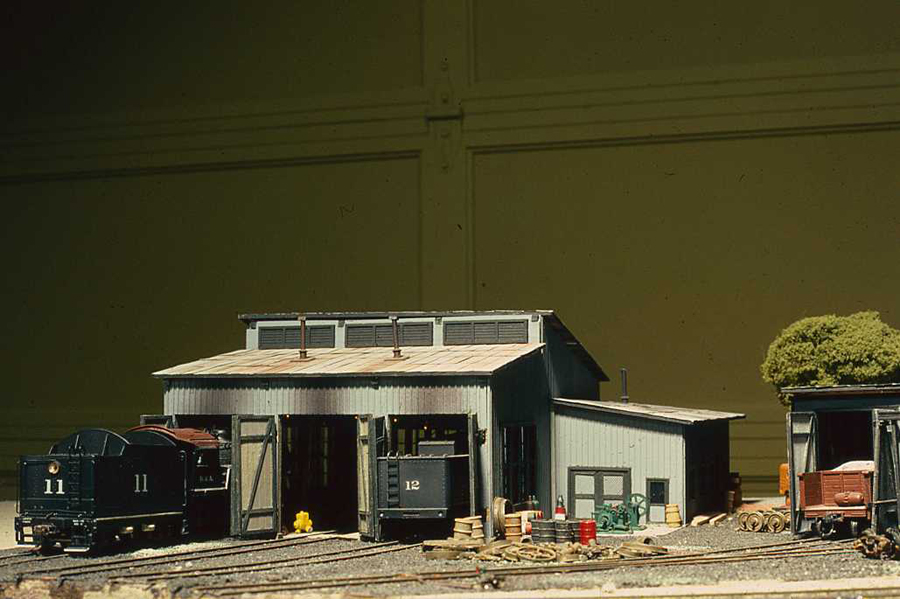 |
| An overview of the engine service area and station at Harrison. |
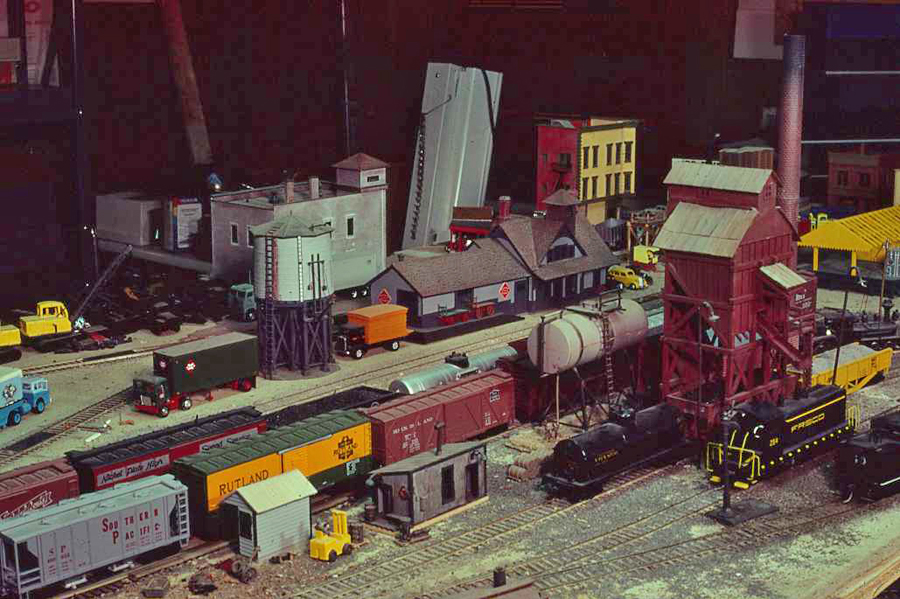 |
| Note the logging scene on the hill above the tracks. Engine #40 is at the top of the grade at the yard limits of Harrison. |
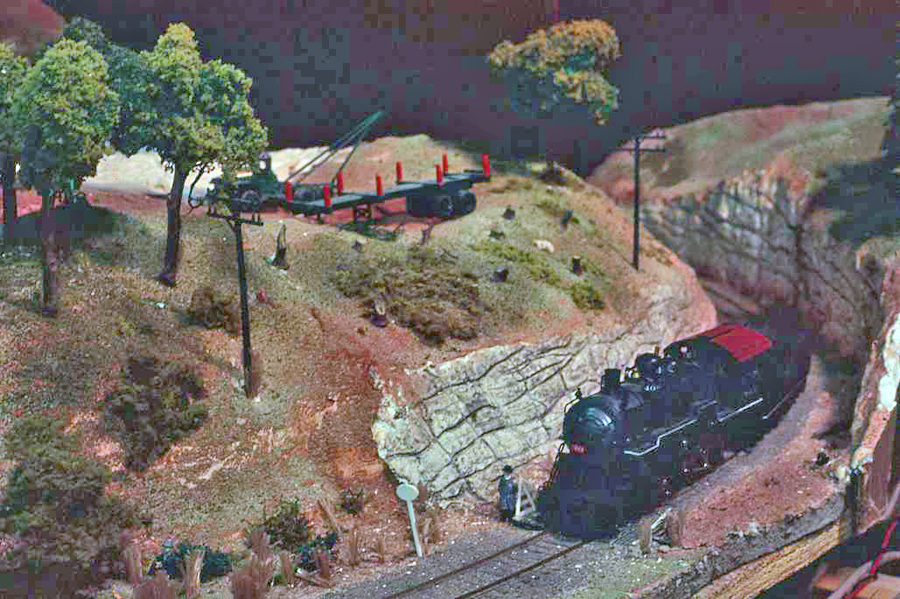 |
| Another view of the forrest at the top of the grade at Harrison. |
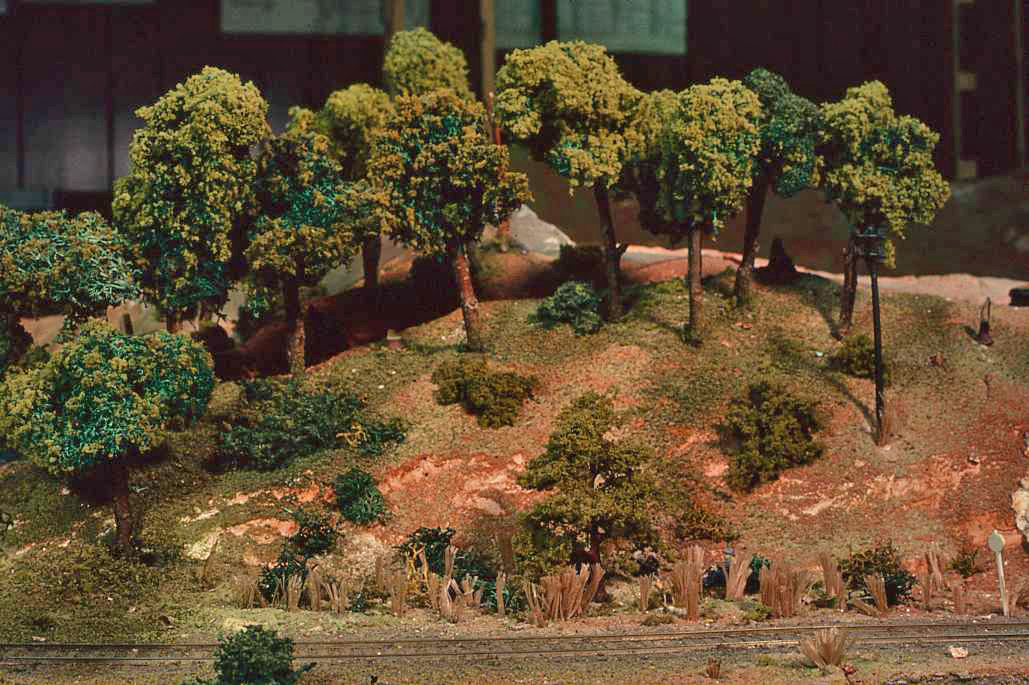 |
| Engine #11 is seen on the back track crossing Main Street preparing to pick up a empty box car at the newspaper. |
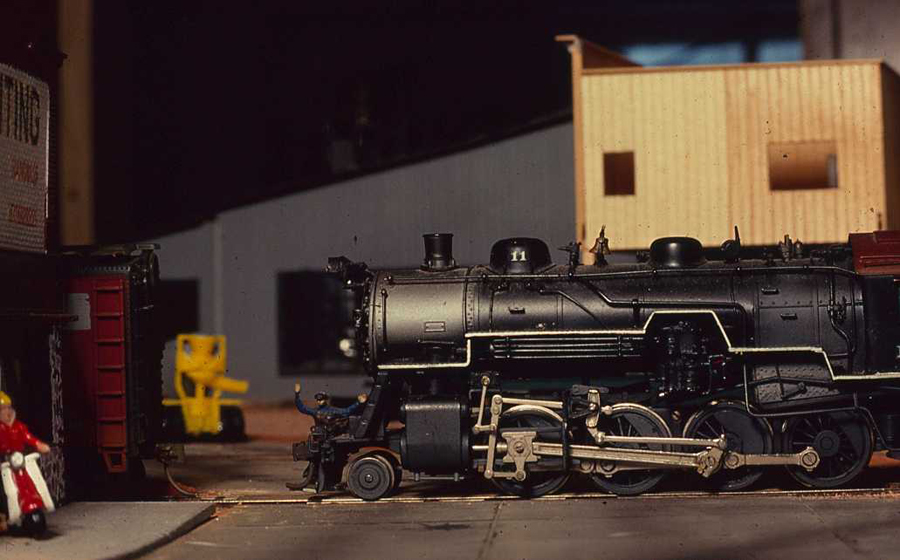 |
Here we see the crossing of the back track with the main line. Note that the crossing is protected by semaphore signals. The back track dead ends at the wholesale grocer just beyond Welch's Feed Mill. This crossing was laid with me on my stomach as the ceiling was only 9" above. It continued to give trouble on the curved route with derailments until the layout was moved to Clarksville where I could get on this side of the layout and look straight down while relaying it. It works perfectly now. |
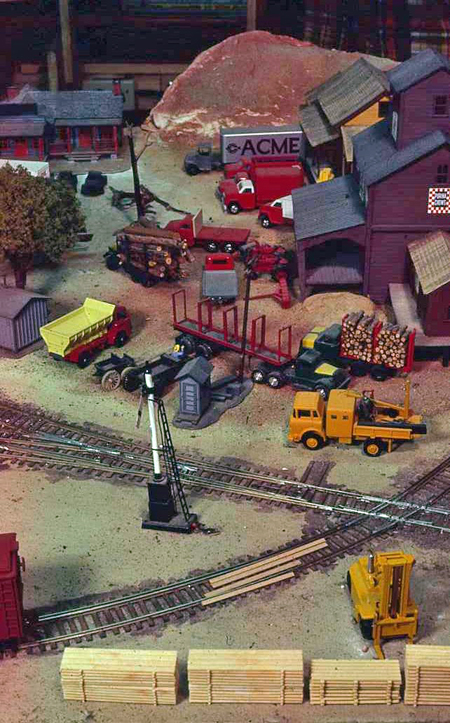 |
| My model of the Missouri & Arkansas Railroad has been moved to a new location in the basement of our home in Tahlequah, OK.
This is the first table set on Black & Decker Workmates in the basement allowing a view of how the layout will appear when coming down the stairs into the basement. This table includes the engine service facility, combination passenger and freight station, produce shed, ice plant and icing platform, fire station, and the main street of Harrison. |
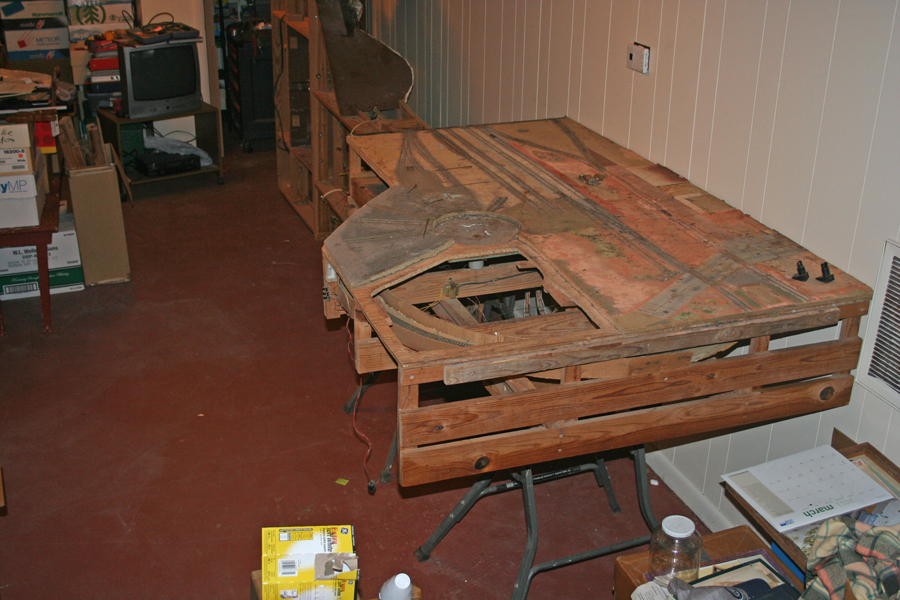 |
| My new Layout Creepy Crawler has allowed me to install legs at the new height which allows me to work under the layout even with my bad knees. |
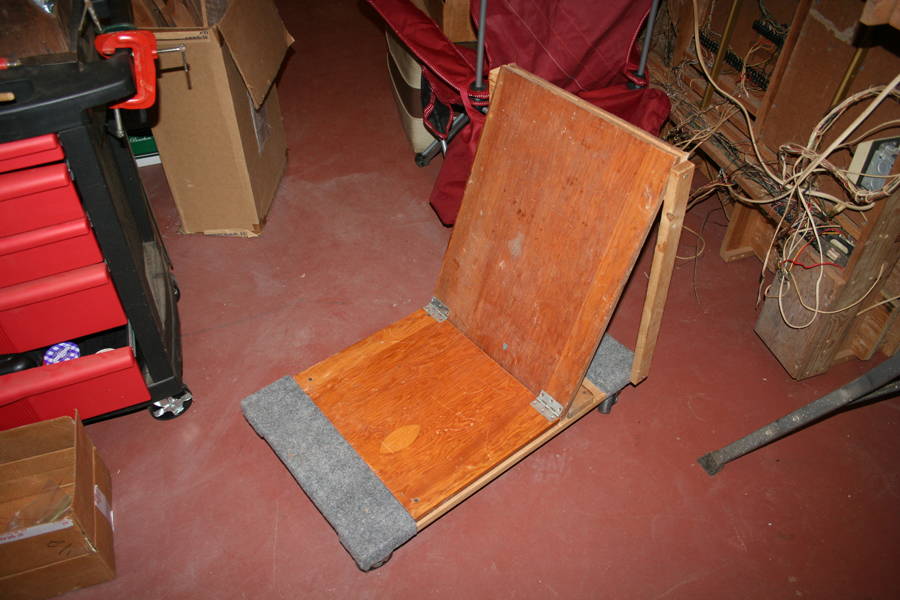 |

Home of THE ARKANSAS SCRAMBLER
For questions, email arkyrail at outlook.com
